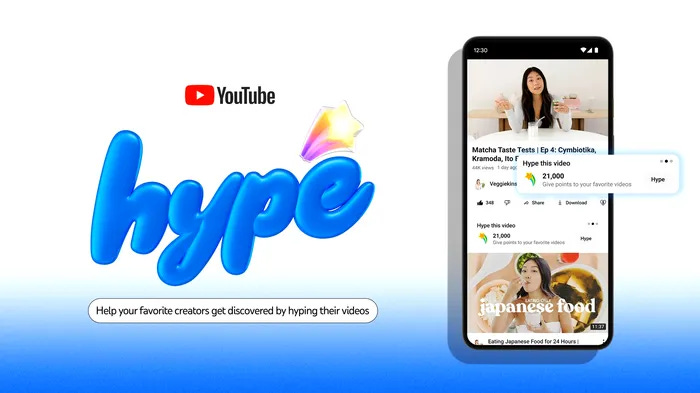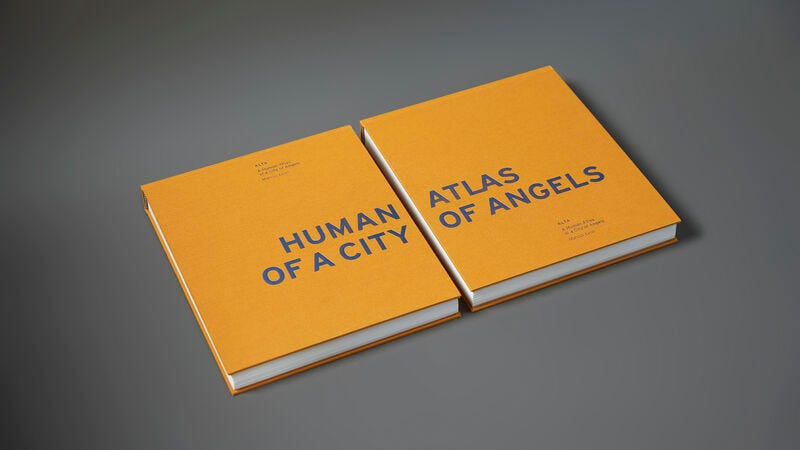⚡ Input is Output - Issue #3
IP Blockchain, a new Hype, the complexity paradox, a Human Atlas, Notebooks and AI in education.
Hello! 👋🏼
The past week has been a bit of a blur. Between enjoying the final week of my paternity leave, judging the Pause Awards, joining an AI panel discussion in Melbourne, and trying to find time to sit down and write this issue, the week seems to have disappeared. I don’t know if it is the break from work - freeing up time and headspace, or simply holding myself to account to write this, but I feel I’m gaining a renewed sense of clarity and focus, allowing me to reflect on all these experiences with fresh energy.
With that in mind, here are some of the things that caught my attention and I have been thinking about in the past week.
This week’s Input is Output in summary:
⚡ 5 Things:
💭 Thought for the week: AI in Education
⚡ Story - The World’s IP Blockchain
Story is a blockchain platform designed to tokenise intellectual property (IP), making it a liquid, accessible, and programmable digital asset. By creating what they call “IP Legos,” Story enables creators to easily license, remix, and monetise their works through transparent, automated systems on the blockchain. This approach revolutionises how IP is handled by using blockchain to track ownership, ensure proper attribution, and streamline royalty payments - all without the need for traditional legal infrastructure.
The opportunity Story presents is enormous, especially in the age of generative AI and content creation. Creators can turn their IP into programmable assets that are easily integrated into thousands of applications. This not only protects their rights but also unlocks new revenue streams by allowing remixing and collaboration on a global scale. For industries like fashion, art, and media, where ownership and licensing complexities often hinder creativity, Story provides a system that automates and simplifies these processes, making IP accessible and valuable in the digital economy. By combining AI and blockchain, Story is encouraging creators to bridge the gap between traditional IP systems and the decentralised Web3 world.
This is particularly important as the flood of AI-generated content continues to grow, and existing IP systems struggle to keep up with the pace of change. Story aims to provide a more dynamic, scalable solution for managing and monetising creative works in this new digital landscape.
Whilst I see the why for this, I question whether creators will actually use it, mainly due to the technical challenges of adoption, especially for smaller creators. It feels like we have been here before with Web3 and NFT’s… look at Opensea and the regulatory hurdles they are trying to jump through.
You could argue that raising $140 million at a $2.25 billion valuation is a strong signal that investors see significant potential in Story’s model of tokenising IP on the blockchain. Let’s hope I’m wrong.
⚡ YouTube - Hype
YouTube has launched Hype, a new feature designed to build excitement around video premieres and live streams. Hype allows creators to host interactive, live pre-shows, engaging audiences in real time before the main event begins. The goal is to enhance audience connection and anticipation, driving deeper engagement with content. For creators, it’s a powerful way to leverage community involvement and boost visibility for their upcoming content.
With Hype, YouTube are tapping into the growing trend of real-time interactivity and community-driven content creation, offering creators new tools to deepen their audience connections. It is a great example of how platforms are evolving to meet the demand for immersive, community-centric experiences
You can read more here.
⚡ The Complexity Paradox of ChatGPT, AI and UX
The Built for Mars case study on ChatGPT explores how users interact with AI tools, specifically focusing on user experience (UX) and product design. The study dives into how OpenAI’s ChatGPT manages user expectations, handles mistakes, and guides users through conversations. One of the key takeaways is that while ChatGPT performs well in providing responses, its design lacks in handling errors and misunderstandings smoothly, leaving users uncertain at times. The case study suggests that as AI tools become more widespread, improving their UX will be crucial in increasing trust and usability.
As AI tools evolve, it’s essential to ensure that they enhance rather than hinder human interactions. This case study highlights the importance of refining AI interfaces to create more intuitive, human-centered experiences.
Built for Mars - ChatGPT Case Study
⚡ A Human Atlas
A Human Atlas - Social change inspired by art, science & storytelling. Human Atlas projects are research-based, interdisciplinary explorations of the people of a specified geography. They are built on extensive nomination processes. A carefully curated group nominates individuals who are championing and driving social impact in all its forms: from public servants to entrepreneurs, from non-profit leaders and activists to artists and scientists. The projects then map these remarkable humans through photographic portraits, app-based oral histories, info-graphic mapping and ancestral DNA. Human Atlas projects take on many digital forms but always begin as a published limited edition book and an interactive exhibition.
Alta, the most recent project, is a research-based exploration of social change in Los Angeles in the early twenty-first century. The four-year project was built on the foundations of a year-long nomination process, where a diverse group of Angelenos nominated individuals from their own communities. Each nominee has made significant contributions to LA and embodies the very best of service to society.
Alta is an Earth Percent accredited project and is available in book, museum exhibition, architectural projection, podcast, and digital formats.
The book looks incredible, designed by Studio Sutherl&. You can pre-order ALTA here.
⚡ Google NotebookLM
Google recently introduced NotebookLM, an AI-powered tool designed to help users manage and interact with their content more effectively. By integrating language models into a notebook-like interface, NotebookLM allows users to upload and analyse documents, notes, or research materials. The AI can generate summaries, answer questions based on the uploaded content, and help users organise information more efficiently.
The real power of NotebookLM lies in its ability to streamline workflows, enabling faster insights and deeper connections between disparate ideas. In an age where content overload is real, tools like this offer a smarter way to manage knowledge and accelerate learning.
I’m enjoying exploring what it can do and how it might help me produce Input is Output. The audio feature, which takes your content and turns it into a lively podcast type discussion is excellent for a proof-of-concept. Check out Issue 2 of Input is Output in audio form here.
💭 Thought for the week: AI in Education - The Next Frontier?
As AI continues transforming industries, its role in education becomes increasingly significant. Tools like ChatGPT and other generative AI models are being integrated into classrooms to enhance personalised learning, streamline administrative tasks, and support teachers. While the potential benefits are vast, educators face the task of incorporating these tools responsibly, ensuring they complement rather than replace human interaction.
One of AI’s key advantages I see in education is personalisation. AI-driven platforms can adapt lessons in real time, catering to the unique learning needs of each student. This is especially beneficial for students who may struggle in traditional classroom settings. According to research, AI can improve accessibility and equity in education, helping students from diverse backgrounds engage with learning materials in more personalised ways.
However, over-reliance on AI poses unintended consequences, particularly if we attempt to replace teachers entirely. While AI can deliver content and personalise learning, it cannot replicate the human connection central to effective teaching. Teachers play a crucial role in fostering emotional intelligence, encouraging critical thinking, and providing social interaction, all of which are vital for a child’s overall development. These elements are not just part of the learning experience but are essential to developing interpersonal skills, empathy, and collaboration.
The importance of human interaction extends beyond education - social and emotional development relies on relationships formed in classrooms. Studies show that students who build strong bonds with their teachers and peers perform better academically and develop essential social skills. AI, no matter how advanced, cannot offer this type of engagement or mentor students in the way human educators do. It can be a powerful tool to enhance learning but should not replace the core human aspects of teaching.
While AI can revolutionise education through personalisation and efficiency, its role must be balanced with the need for human connection. Educators and AI must work together to create a learning environment that fosters both intellectual and personal growth, ensuring students not only excel academically but also develop the social and emotional skills needed to thrive in the real world.
Who will dominate AI in education?
A few big players, along with many startups, are already positioning themselves for leadership in this space:
Microsoft is emerging as a powerhouse with its integration of tools like ChatGPT into platforms such as Microsoft Teams for Education - automating administrative tasks and enhancing personalised learning experiences.
Google is building its AI momentum through Google Classroom and leveraging advanced AI tools like BERT and LaMDA to deliver personalised educational content. I see NotebookLM, in a student focused guise, being an incredible tool for students.
Startups like Squirrel AI and Sana Labs are pushing boundaries with AI that adapts in real-time to students’ learning behaviour and access to knowledge bases respectively. These companies will fuel the competition, offering specialised, AI-enhanced learning systems tailored to the diverse needs of education.
I’d love to hear what you think about the future of education. What excites me about envisioning the future of any industry is working it back to today, so we can figure out what opportunities exist and what actions to take next.
👀 What I’ve been…
📺 Watching: Mark Zuckerberg @ Acquired Live
Zuckerberg riffing on the challenges Meta has faced over time. “You underestimate how painful things are going to be…"
📚 Reading: Co-Intelligence by Ethan Mollick
A guide to working alongside smart machines, unlocking new possibilities without losing our human touch.
🎧 Listening: Odesza
The creative soundscapes are perfect for letting the mind wander.
💻 Trying: Cursor
The AI integration within the VS Code style environment really is quite amazing.
That wraps up this week’s edition of Input is Output! As always, I’m excited to hear your thoughts - what has caught your attention or imagination lately? Let me know, and we’ll keep this conversation going!
Until next time,
James






